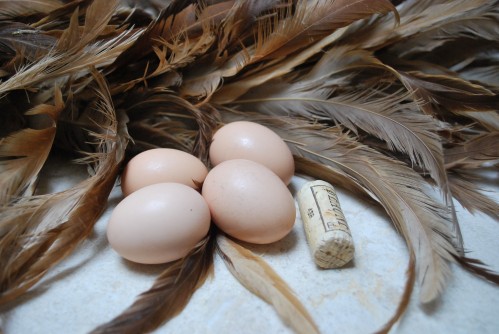 My Black Star hen, Copper Penny, started laying her first eggs around five months old. They are perfect in every way, but tiny at first. Pullet eggs are about as big in size as a wine cork. Gradually her egg size increased as her egg production continued. Black Star hens are good layers, with a pretty brown egg.
My Black Star hen, Copper Penny, started laying her first eggs around five months old. They are perfect in every way, but tiny at first. Pullet eggs are about as big in size as a wine cork. Gradually her egg size increased as her egg production continued. Black Star hens are good layers, with a pretty brown egg.
Pullets, hens that are less than a year old, usually start laying at 5-6 months old. As they begin laying, they have small eggs, at first which naturally increase in size. Young hens sometimes have egg irregularities such as shell-less eggs and double-yolks--two yolks in one egg. Have patience, in no time their egg-laying straightens out quickly.
A double-yolk egg is much larger in size, sometimes in width as well as length. It is not real common, but more common with young pullets starting their egg-laying production. Two yolks are ovulated at the same time, rather than one. Occasionally, it is an inherited trait, in which a hen regularly lays double-yolked eggs. Double-yolked eggs are prized eggs.
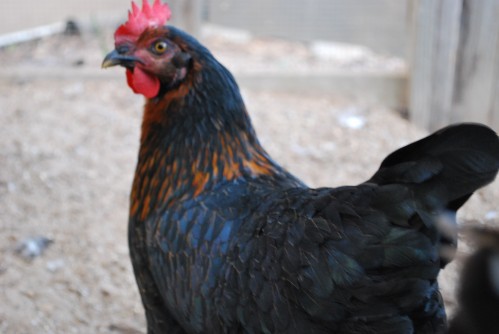 "Copper Penny" in a regal pose. The Black Star breed is a trade name for black sex-link hybrid chickens. The Black Sex Link breed is defined as the offspring of a non-barred cock with a barred hen. Usually, the cock is a Rhode Island Red or a New Hampshire breed, and the hen is a Barred Plymouth Rock. Normally, the offspring cockerels (males) are barred, and the pullets (females) are dark with some red feathers. In Penny's case, she is dark feathered with copper red neck and hackle feathers.
"Copper Penny" in a regal pose. The Black Star breed is a trade name for black sex-link hybrid chickens. The Black Sex Link breed is defined as the offspring of a non-barred cock with a barred hen. Usually, the cock is a Rhode Island Red or a New Hampshire breed, and the hen is a Barred Plymouth Rock. Normally, the offspring cockerels (males) are barred, and the pullets (females) are dark with some red feathers. In Penny's case, she is dark feathered with copper red neck and hackle feathers.
I've raised her since she was two weeks old. When she was a chick she was always the curious one, flying up on my back and shoulder. As she has matured, she still flies up on my back and shoulder when you she has a chance. With that said, I think I a chicken's defining personality is evident very early on in their lives.
Please share if you have young pullets starting to lay their first eggs. Please comment if you have gotten double-yolk eggs from your hens.
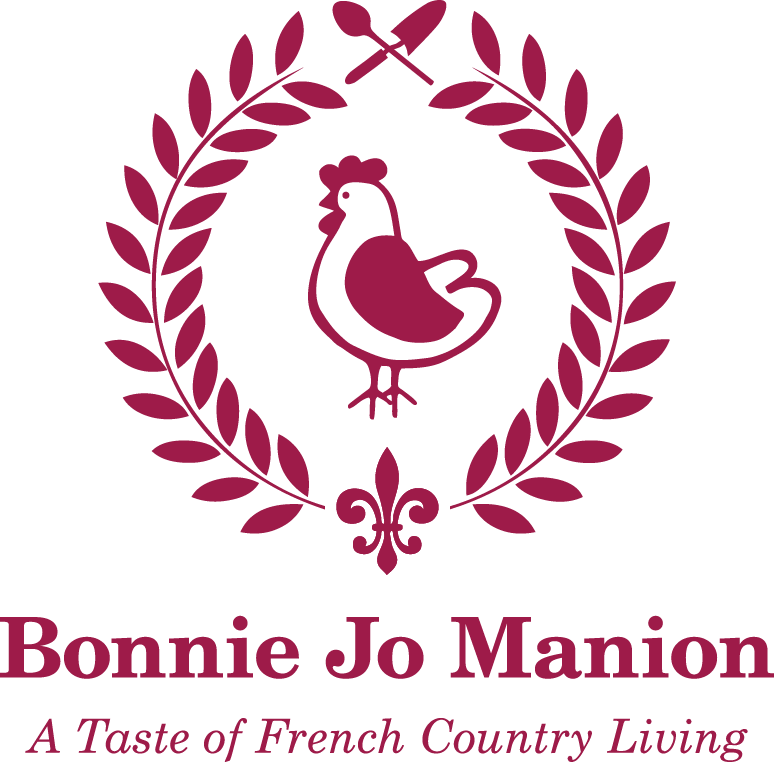
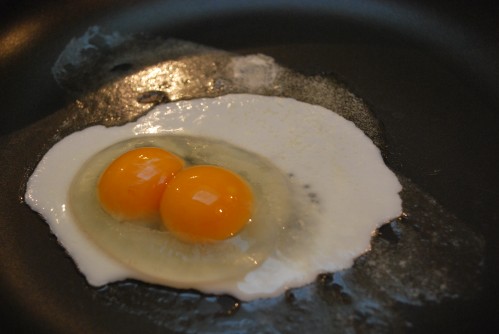

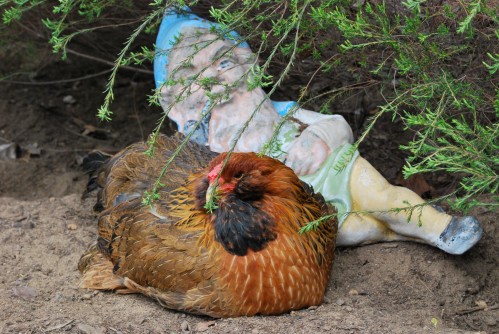
 , Damerow describes the Ameraucana breed as originally from Chile, and one of only two breeds that lay this special blue-colored egg. She also writes the Ameraucanas breed has many many color varieties, and can be large or bantam in size. In Damerow's new book, she lists and describes many more poultry breeds at your finger tips.
, Damerow describes the Ameraucana breed as originally from Chile, and one of only two breeds that lay this special blue-colored egg. She also writes the Ameraucanas breed has many many color varieties, and can be large or bantam in size. In Damerow's new book, she lists and describes many more poultry breeds at your finger tips.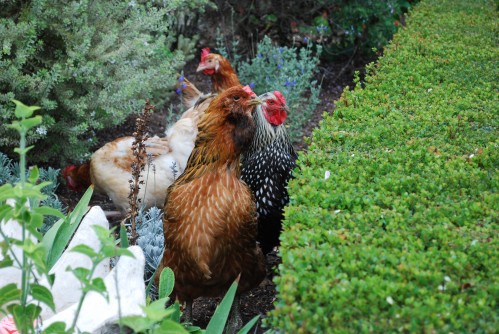
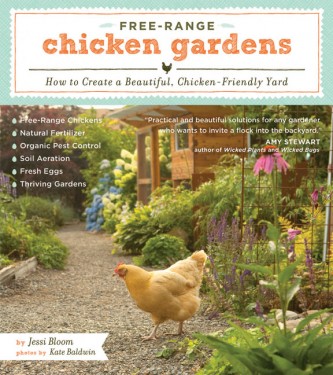
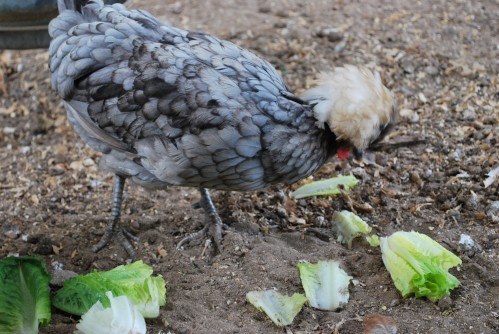
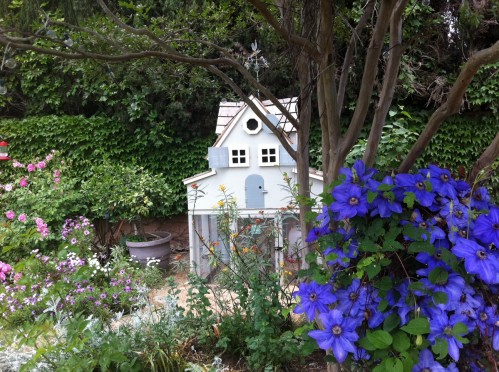



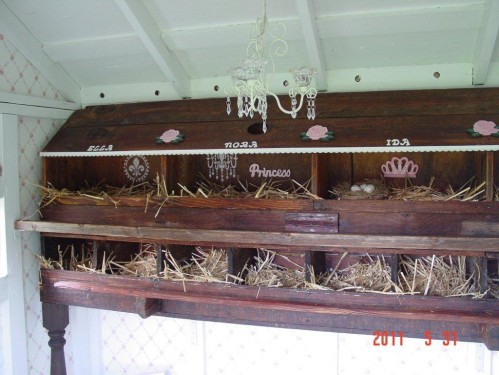

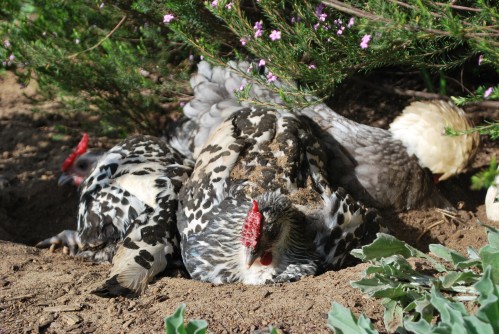 It is blissful when all of your hens get along easily. My three hens, Charley, Dolly, and Dahlia have been together since they were day old chicks. They get along famously, and move around in my garden as a unit. They are never far from one another. It was special to find them all together in the warm sandy soil under one of my Pink Breath of Heaven shrubs.
It is blissful when all of your hens get along easily. My three hens, Charley, Dolly, and Dahlia have been together since they were day old chicks. They get along famously, and move around in my garden as a unit. They are never far from one another. It was special to find them all together in the warm sandy soil under one of my Pink Breath of Heaven shrubs.